-

1950 January 1, 1950
Established under the name ‘The Province Wellesley Co-operative Banking Union Limited’
-

March 4, 1970
Known as Koperasi Bank Persatuan Bekerjasama-Sama Seberang Prai Tanggungan Berhad
-

April 26, 1982
Known as Koperasi Bank Persatuan Kerjasama Seberang Perai Berhad
-

April 5, 1995
Known as Koperasi Bank Persatuan Malaysia Berhad
-

15 September 2014
Known as Koperasi Co-opbank Persatuan Malaysia Berhad
-

13 September 2019
Now known as Koperasi Co-opbank Pertama Malaysia Berhad
The history of the ‘Koperasi Co-opbank Persatuan Malaysia Berhad’ or in short 'Co-opbank Persatuan', stems from the community group meetings, which are largely made up of members of the village’s synergistic companies, at the ‘Sekolah Melayu Sungai Derhaka, Kampung Pertama, Bukit Mertajam’ on the 1 January 1950 when 17 village co-operative companies finally united to form the ‘Co-opbank Persatuan’ which was then known as "The Province Wellesley Co-operative Banking Union Limited" on 7 June 1950 by operating in the Bukit Mertajam Co-operative Development Office.
Most of the village co-operative companies in the Seberang Perai area in the early 50s were small companies and most of them did not have enough capital to finance the needs of their members.
This was a result from the Commissioner of Cooperative Development of the Federation of Malaya’s urge at the time, which was Mr. R.C. Gates, that the Co-opbank Persatuan was founded to enable all the capital from the co-operative companies to be utilized in order to provide loans to curb the "padi kunca" lending problem which suppressed these groups at the time.
Among the main activities of the ‘Co-opbank Persatuan’ at that time was to buy and sell artificial fertilizers to its members to increase their agricultural yields as well as to provide loans so that members could buy livestock, rent land, and to redeem as well as to buy land.
Among those who have contributed to the success of this bank’ establishment was the Commissioner of Cooperative Development of Pulau Pinang, Allahyarham Haji Abdul Rauf Haji Mohd Suki, and the Assistant Commissioner for Cooperative Development of the Malaya Federation, Allahyarham Abdul Majid Haji Muhammad, as well as Almarhum Tengku Indera Putera Ibni Almarhum Sultan Ibrahim.
Apart from them, some figures who also helped in the successful establishment and expansion of the bank are (Dato ') Haji Yusoff Hilmi Haji Shafie or was better known as Pak Long (the First Chairman of Co-opbank Persatuan), Allahyarham Haji Abdul Hamid Abdul Raof, Allahyarham Haji Abdul Rahman Husain , Allahyarham Haji Ahmad Haji Mohd Amin, Allahyarham Haji Said Wahid, Allahyarham Haji Abdul Kadir Haji Hassan, Allahyarham Mr. Harun Abd Rashid, Allahyarham Mr. Khalid Said, Allahyarham Haji Abdullah Haji Ali, Allahyarham Mr. Harun Mat Wali, Allahyarham Mr. Md Isa Yasin and Allahyarham Mr. Nordin Mastan.
The glorious history of the Co-opbank Persatuan began with the purchase of the 6,780-acre Bertam Estate for RM2.26 million from Bertam Consolidated Rubber Company in North Seberang Perai in 1959 and the purchase of this estate has saved the position of about 6,000 residents in the estate area which consisted from poor and destitute people.
At first, the Bertam Consolidated Rubber Company sold the estate to a ‘chetiar’, NTS Arumugam Pillai but with the help of the Minister of Agriculture and Development Cooperation of the Federation of Malaya then, Datuk Abdul Aziz Ishak, the bank managed to get the estate back from Bertam Consolidated. Negotiations to acquire the estate involved four parties between Dato 'Abdul Aziz, NTS Arumugam, Bertam Consolidated and Co-opbank Persatuan took place at Bukit Mertajam Rest House.
The Minister also assisted the Co-opbank Persatuan to obtain a loan of RM1.7 million from Standard Chartered Bank, Kuala Lumpur for a period of three years with the guarantee of Bank Agong (now Bank Rakyat) to pay the remaining purchase price.
However, the Co-opbank Persatuan faced a problem, when the residents of the estate were unable to pay the 25 per cent advance payment as a condition of the sale of the lands that being cultivated or occupied, to the Co-opbank Persatuan.
After the expiry of the agreement with Standard Chartered Bank, the Co-opbank Persatuan applied for a loan of RM1.7 million from the Police Cooperative of Peninsular Malaysia for a repayment period of three. However, due to the short loan period, Co-opbank Persatuan subsequently applied for a loan of RM1.7 million from the government and the application was approved, with the agreed repayment period of 15 years.
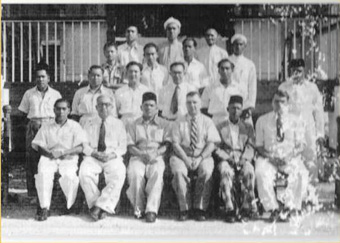
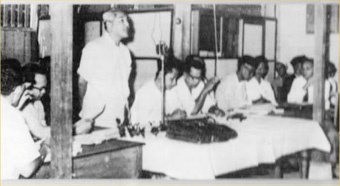
As a result of the hard work of the Co-opbank Persatuan Board Members, and the soaring land price in the Bertam Estate in the 60's, the Co-opbank Persatuan members were able to settle the remaining land price well and the Co-opbank Persatuan also managed to fully settle its loans with the government for the duration of only 12 years.
Although the Bertam Estate land sale and purchase deal between the Co-opbank Persatuan and the purchaser mainly relating to title deeds has not been fully settled after 30 years, the financial statements on the land sale and purchase deal which closed in 1986 showed that the Co-opbank Persatuan had managed to make a profit of RM2.5 million.
Based on the experience of managing the sale and purchase of Bertam Estate land, the Co-opbank Persatuan subsequently purchased other lands to be used as a subdivision of land lots for sale to its members.
In 1963, the location of the Co-opbank Persatuan’s office had also moved to Jalan Chan Ewe Pin (then the office of the Cooperative Development Department). In the early stages of its establishment, the Co-opbank Persatuan relied on the staff of the department who were seconded to manage and administer the Co-opbank Persatuan until the early 1970s.
Following the development of business at that time, Co-opbank Persatuan moved to its first office building and laid the foundation stone for the construction of the building at Jalan Bagan Luar and was completed by the Minister of Agriculture, Tan Sri Ghazali Jawi in 1963. The three-storey building, which was valued at RM240,000m located at 4228, Jalan Bagan Luar, Butterworth was later officiated by the first Prime Minister, Yang Teramat Mulia Tunku Abdul Rahman Putra Alhaj on 27 April 1964.
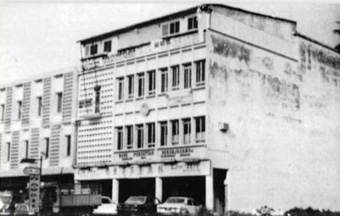
At the initial stage of its establishment, the membership of the Co-opbank Persatuan consisted of a combination of 21 village co-operative companies in Seberang Perai alone.
When the Lembaga Pertubuhan Peladang (LPP) was established in 1971 and the administration of all Cooperative Companies was placed under it, CBP had also opened its membership to individuals with the total membership of the Co-opbank Persatuan has increased to over 62,005 people and 406 cooperative membership with a total paid -up share of over RM380.0 million.
Also at this time, the original name of CBP was changed to ‘Bank Persatuan Berkerjasama-Sama Seberang Prai Tanggungan Berhad’ on 4 March 1970 and later to ‘Bank Persatuan Kerjasama Seberang Perai Berhad’ on 26 April 1972.
CBP was also allowed to have its own manager after the Board Members discussed with the Jabatan Pembangunan Koperasi (JPK) in 1979.
Mr. Faudzi Naim Haji Noh was appointed the first General Manager of CBP in 1980 and he served four years before Assistant Secretary, Mr. Yahya A.Wahid replaced him in 1984. After the retirement of Mr. Yahya in 2008, the post of General Manager was subsequently replaced by Mr. Azman Ahmad.
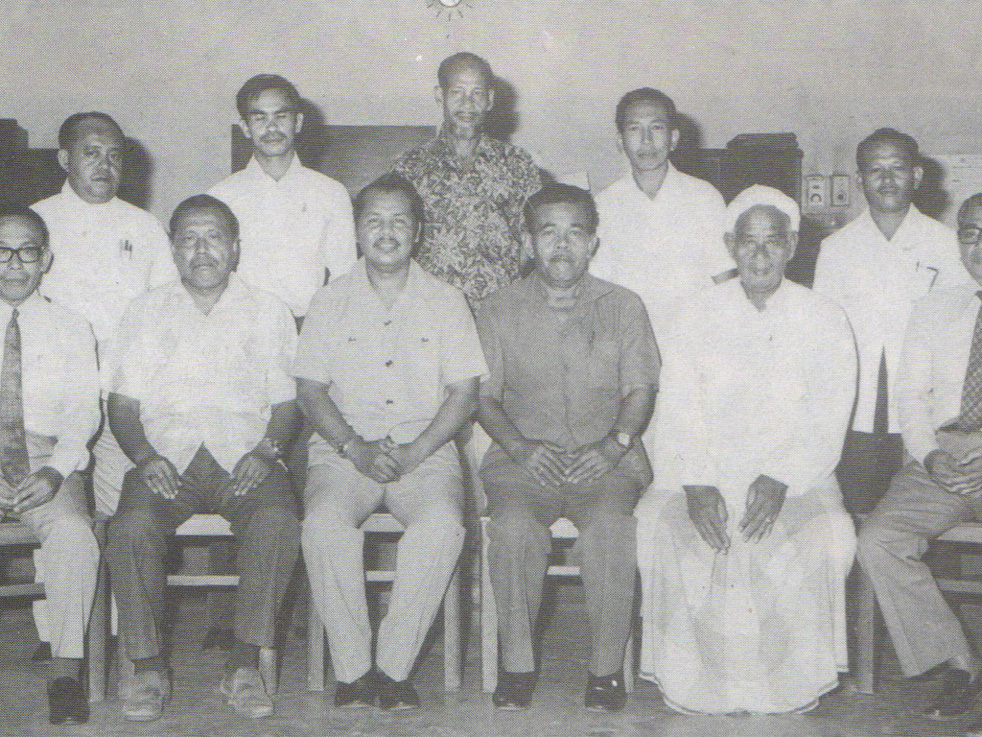
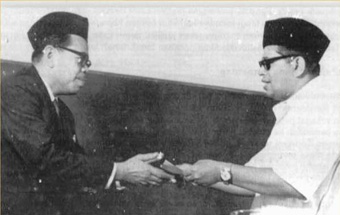
After opening its membership to individuals in 1971, the Co-opbank Persatuan was increasingly gaining popularity from the community and the position of the Co-opbank Persatuan’s counter on the first floor of the building was no longer suitable for operation.
Therefore, the Board Members of the Co-opbank Persatuan decided to purchase three units of three-storey shophouses in Taman Selat, Butterworth for RM2.34 million on 28 July 1982.
Three years later, the Co-opbank Persatuan’s operations were relocated to the premises in Taman Selat and the old building at Jalan Bagan Luar were sold to Bank Bumiputra Malaysia Berhad for RM2.0 million in April 1986.
From then on, the Co-opbank Persatuan had arranged to open a branch in Kepala Batas in November 1983 and was followed by Nibong Tebal branch in August 1986.
The Co-opbank Persatuan’s first involvement in stock investment was through the ownership of 30 per cent equity of Thexchem Corporation Berhad in 1981 through its own capital financing of RM1.2 million and this was the largest investment in a private company at the time. All the shares were sold in 1989 for RM1.6 million.
Co-opbank Persatuan also has investments in Koperasi Gabungan Negeri Pulau Pinang (KGN) amounting to RM240,000 starting in 1980 and Koperasi Insurans Malaysia Berhad (MISC) totaling to RM300,000 in 1994.
To further boost the growth of Co-opbank Persatuan, the management had engaged in the housing construction [JT1] sector for the needs of its individual members.
The first housing project undertaken by Co-opbank Persatuan was to develop phase one of 129 units of houses in Taman Abdullah Fahim, Kepala Batas on a 15-acre site with a value amounting of RM11.5 million.
After succeeding in the housing project, Co-opbank Persatuan later developed the second phase of the park in 1984 which contained 53 units of single-storey and semi-detached terrace houses and the project which was estimated about RM4.5 million was completed in February 1986.
The next housing project was developed in Taman Haji Mohamad Amin, Permatang Pauh, which involved 111 units of terrace houses and 380 units of five - storey flats worth RM17.5 million. The projects were completed in November 1986.
Housing development activities were halted after the demand for housing was very low due to the economic downturn in 1987 but in the following year a company, Tai Sai Gin Garden Sdn. Bhd. wants to sell his housing project in Telok Air Tawar to Co-opbank Persatuan.
After a series of negotiations, an agreement was finally reached and the Co-opbank Persatuan agreed to buy 26 units of bungalows and 44 units of single-storey semi-detached houses amounting for RM4.0 million.
To finance the purchase, the Co-opbank Persatuan with the assistance of the Jawatankuasa Pemandu Pulau Pinang (JKP) obtained a loan of RM3.6 million from the Urban Development Corporation (UDA) and the project was later renamed to Taman Wira.
The house was sold to the individual members of Co-opbank Persatuan at a price of RM85,000 per unit for a bungalow and RM65,000 per unit for a semi-detached house.
To date, Co-opbank Persatuan has developed 16 housing projects worth more than RM160 million throughout Pulau Pinang and has directly benefited more than 3,000 members who have purchased the aforementioned houses.
In the 1990s, Co-opbank Persatuan expanded its empire by opening new branches in several other states such as Bayan Baru, Pulau Pinang (August 1993), Sungai Petani, Kedah (August 1994), Taiping, Perak (August 1996), and Alor Setar, Kedah (December 1997).
The Co-opbank Persatuan also implemented the Islamic Banking system in 1994 as a result of consultation with Bank Islam Malaysia Berhad (BIMB) a year earlier. Through the consultation service, the Co-opbank Persatuan’s staff were given guidelines and training by BIMB to implement the Islamic Banking system.
Apart from that, Co-opbank Persatuan also entered into a computing application agreement with the Information Technology Unit of Universiti Teknologi Malaysia (UTM) to develop its Islamic Banking product system. In line with that, the Co-opbank Persatuan then offered Al-Wadi’ah savings and Al-Mudharabah investment facilities in 1994 and offered Al-Bai Bithaman Ajil financing (Deferred Price Sale) for all types of financing accounts in the Co-opbank Persatuan starting from 1995.
In line with current developments. Co-opbank Persatuan at that time was approved to change its name to ‘Koperasi Bank Persatuan Malaysia Berhad’ on 25 April 1995.
From just credit services to farmers since its inception, the Co-opbank Persatuan has expanded its services to the banking sector covering a wide range of financing products to individuals, cooperatives and corporations as well as a wide range of savings and investment products.
September 15, 2014 was the starting point for the Co-opbank Persatuan when it received recognition from the Suruhanjaya Koperasi Malaysia (SKM) to operate fully as a Co-opbank. With the following recognition, the Co-opbank Persatuan has established itself as the second largest Co-opbank in Malaysia.
With 20 branches all across Malaysia, Co-opbank Persatuan has not only successfully positioned itself in line with other financial institutions in the country but also raised the prestige and socio-economic status of nearly 79,000 individual members and more than 600 cooperative members with total paid-up share capital amounting to over RM366 million (2017).
By the end of 2017, the Co-opbank Persatuan had recorded impressive growth with total accumulated assets of RM3.1 billion and revenue exceeding RM182 million, an increase of 33% or RM45.1 million (2016: RM136.9 million). As a result, CBP has achieved a profit before tax and zakat of RM39.7 million, an increase of 54.5% or RM14 million over the previous year (2016: RM25.7 million).
This success was not achieved overnight, and it demanded a huge paradigm shift and sacrifice by all parties from top to bottom, from the Board Members, Senior Management and all its staffs who contributed since the beginning of its inception.
The recognition and success achieved by this Co-opbank Persatuan provides a valuable lesson for the organization that, the volume, the size of the organization, the location and the way in which it started are all not important as long as they have the passion, commitment, commitment and most importantly teamwork to forge continuous success and excellence.
